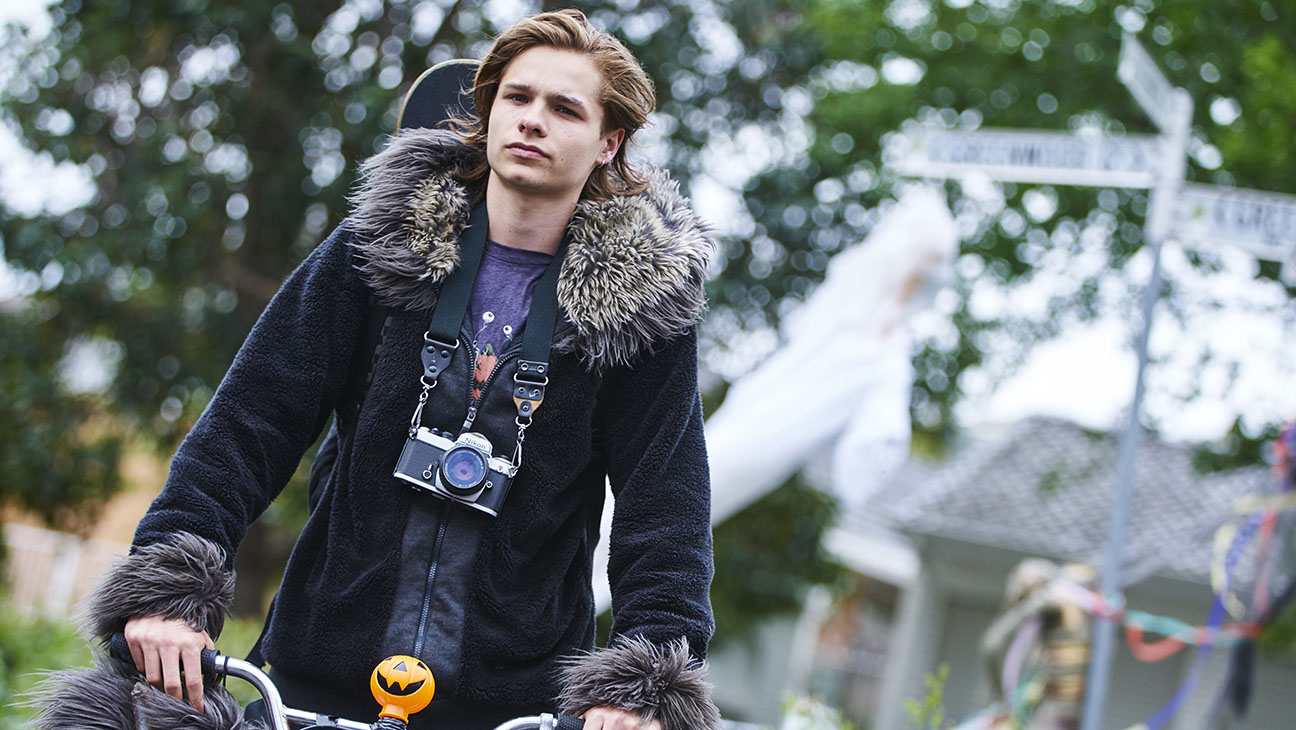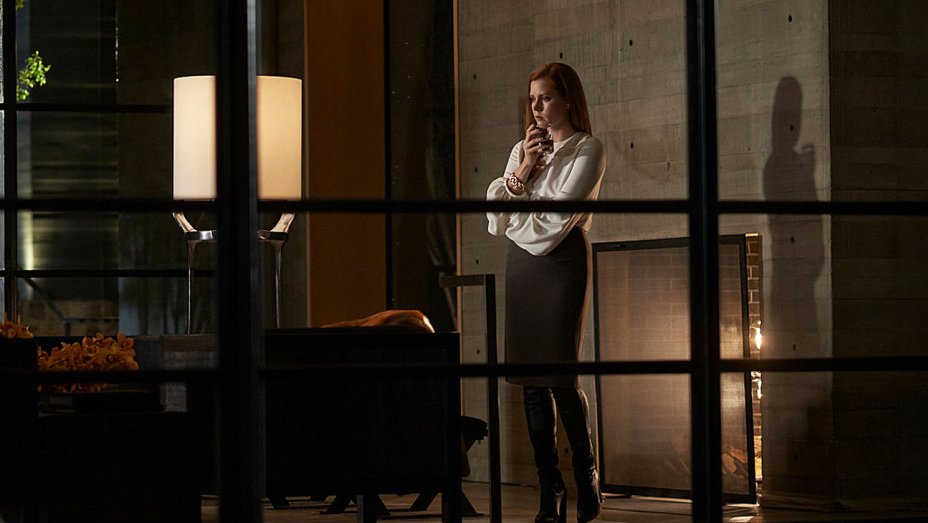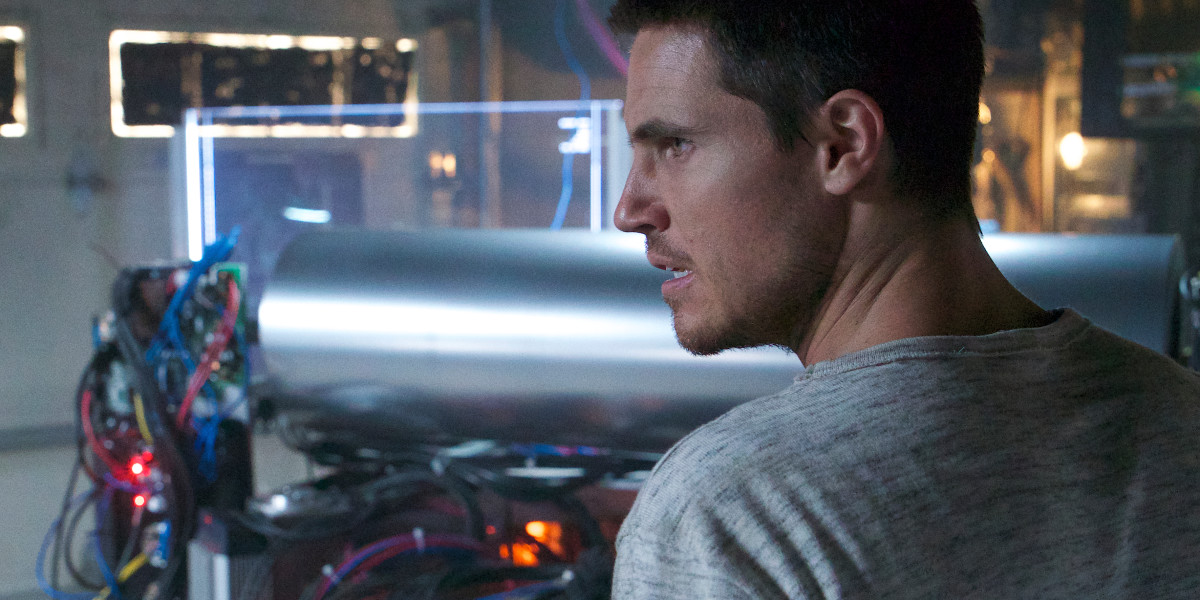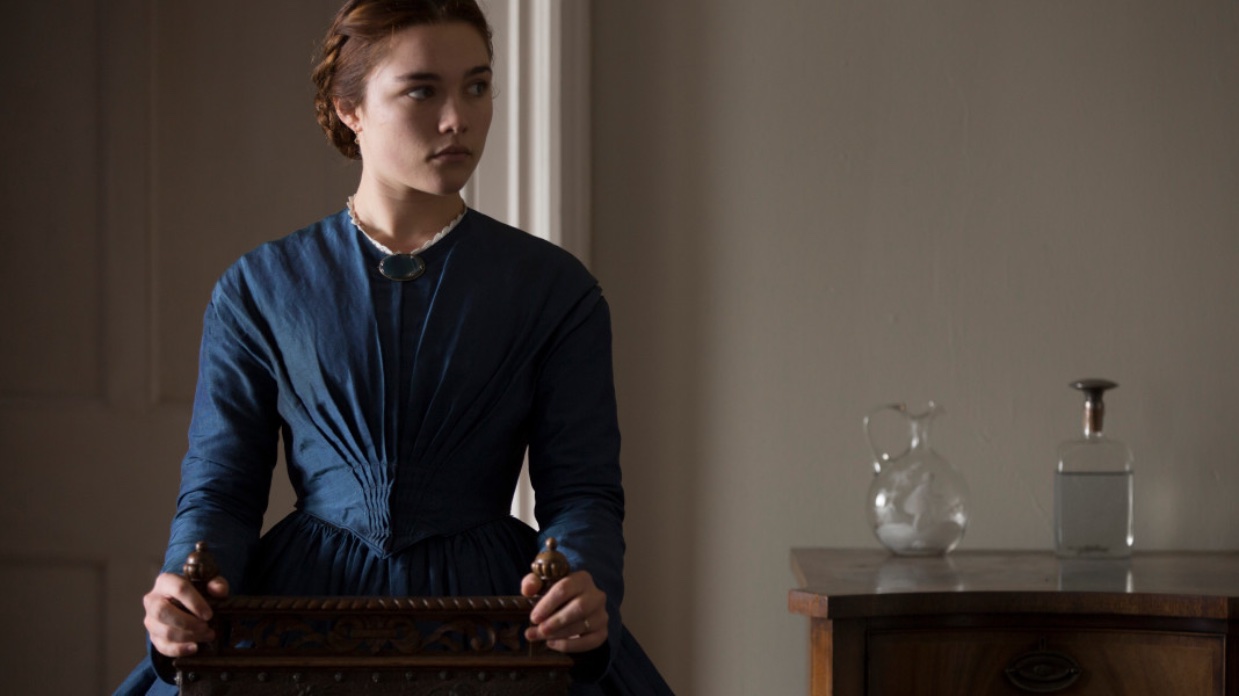 |
| Arabic movie poster for Where Do We Go Now? |
Nadine Labaki is a pretty big deal. Following up her directorial debut, the 2007 film Caramel (which she also wrote and starred in), she brought her sophomore directorial effort, Where Do We Go Now? back to the Toronto International Film Festival as co-writer, producer, director and star. I was lucky enough to snag tickets to a 9:45AM showing. While normally I wouldn’t be caught watching films at that ungodly hour of the morning, I couldn’t resist seeing this film. It turns out I hit the mother lode as a movie-lover. In fact, it was evident from the laughs and the sniffles from my fellow movie goers that Labaki’s film affected everyone. It’s a comedy, a drama, a musical, a social commentary! It’s quite simple yet extraordinarily complex at the same time. At the end of the festival it received the Cadillac People’s Choice Award, one of the few awards actually given out at Toronto (a non-competitive festival), and has since gone on to snag a U.S. distribution deal with Sony Pictures Classics and break box office records in Lebanon. Earlier in the year, it was an official selection at the Cannes Film Festival in the “Un Certain Regard” category. I didn’t know what to expect from the film, since I’m often misdirected by film synopses and I hadn’t even heard of it prior to September, but not knowing is one of the most exciting parts for me. Here’s what I found.
The story is set in a small town in Lebanon whose population is divided between Muslims and Christians. They have a mosque. They have a church. They eat together, live beside each other, celebrate together, mourn together, and they have spent many generations in peaceful existence with each other. Religious differences seem to be the least of their concerns when it comes to functioning as a community. The film begins with a group of women dressed in black walking together in a close group, moving in unison with the beat of the music over the opening credits, surrounded by the dry, mountainous land where they live. It appears as if they might almost break out in dance, but in a close shot, we see that they are sad, even grief-stricken, clutching rosaries, bouquets and photos. As the music dies down, they break into two groups. They are in a cemetery and each moves to one side of it, then scatters amongst the graves which they are there to tend. We see that one side of the cemetery is Christian, the other Muslim.

While Where Do We Go Now? has an incredibly strong ensemble cast – actresses as the leads with actors as supporting characters – director Nadine Labaki could be considered the main star. She plays “Amale,” the owner of a small café which serves as the heart of the town where people gather, both Muslim and Christian alike. Her secret love, the painter “Rabih” (played by Julian Farhat) who is there to renovate her café, also secretly loves her. Toward the beginning of the film, this is played out in a scene in which they dance closely and confess their love through song, all of which is Amale’s daydream as she washes dishes while Rabih looks good standing on his ladder stealing glimpses of her in the kitchen. I’ve heard the film called a musical, but this isn’t really the case. The characters don’t really break into song to replace dialogue, but rather it’s used to enhance the dialogue, and there are only about three short “musical” sequences in the film.
Everything seems to be going well for the townspeople. They have a television set up by a group of young men and the mayor, and once they’re able to get reception (they’re very far away from the nearest big town), the whole town gathers to watch a program. The mayor makes a speech, obviously very proud that this group of young men was able to make this special event happen. He comments on the happiness he feels at having so many years pass living harmoniously with his Muslim friends and neighbors (he is Christian), but then the television program turns to news and the violence that’s occurring elsewhere in Lebanon between rival groups of people. Desperate to preserve their peaceful way of life and ignorance about the outside world full of conflict, the women of the town begin to shout and complain at their husbands and their male neighbors, about whatever they can think of, in an attempt to drown out the noise of the awful news. This is where the story really begins. This film is about a group of women who go to hilarious lengths to prevent the problems of the outside world from entering their own town.
The comedy and the humorous grotesques which Labaki creates are tempered with drama. The turning point in the film comes when several Muslim men find that the door to the mosque has been left ajar and animals have come in, soiling the prayer rugs. No one takes the blame. In fact, it seems as if no one is to blame. It’s an accident, but a few of the men are determined to find who did it and start blaming their Christian neighbors and friends. Later, it is found that someone has retaliated by vandalizing the church, breaking a statue of the Virgin Mary. Something must be done, and the men seem too concerned about who did what that the women must take over. A series of schemes is put into action to distract the men from the problems in the town: a fake miracle experienced by Madame Yvonne (the mayor’s wife) when she hears the Virgin Mary call out various men of the town for their transgressions (including her own neighbor for things she doesn’t like him doing, as well as her husband), hiring a troupe of exotic Russian dancers to pretend to have a bus breakdown so they have to stay in the town for several days (including being relocated to the homes of many of the men and young boys, who couldn’t be happier), and drugging the men of the town by cooking hashish into breads, cookies and cakes which they are served in Amale’s café as they watch a belly dancing show put on by the Russian dancers. It is this final plan that allows the women to use intelligence gathered by one of the Russian dancers to find where the guns are buried which some of the men have been talking about using. Now, in the height of the enjoyment of the hashish-laced baked goods, drink and dancing women, the men’s desire to kill each other is the furthest thing from their minds. The women sneak out of the café to find the spot where the guns are buried, measuring by counting steps from a landmark, fussing over whose feet are bigger and can calculate properly. Eventually they find the stash and carry it to another place in the town to bury, swearing to each other that they will never speak of this to the men.

Labaki brilliantly captures how women speak to each other and treat each other and, what’s more, what they’re willing to do for one another. These are not women who compete with each other for men – most of them are married, anyway – nor compete for attention or status. They are not only neighbors, they are friends, and despite the difference in their religion, they seem to identify first and foremost as members – and even better yet, the leaders – of the community. They don’t let each other get away with anything, and make it clear what they want. They are self-actualized women who know who they are. They are the heart of the community. And they’re funny as hell. They’re a smart, scheming group of women who want to live in peace and are willing to do almost anything to secure it. Labaki shows women apart from men, outside of the definition of these women as wives or mothers, even potential brides (like Amale might be considered by Rabih). There is a strength in this as a storytelling device as well because it allows the women to be women without the constant presence of men to remind us as viewers that these women somehow belong to someone. Yes, they are trying to solve the problems being played out by the men, but it is simply because they know how to solve them and they know they have the power to do so. They are just more than half of humanity, and they act like it!
What drives the drugging of the male population of the town, though, is what happens a bit earlier. All of the hilarity of the schemes and misdirection that the women attempt is tempered with a dramatic scene so beautifully written, acted and shot, it becomes the film’s reality check. While the town is sleeping in the wee hours one morning, Takla’s (one of the main women, played by Claude Baz Moussawbaa) nephew returns on his motorbike with Takla’s son, Nassim. They had gone the day before to a nearby city and spent the night so they could sell the load of goods they had carried on the bike. But Takla finds her son is dead, having been shot by a stray bullet as he and his cousin tried to escape an area where there was a violent conflict. Labaki does not shy away or use some type of cinematographic cop out to avoid the pain this woman feels at realizing her son is dead. She puts the camera on her and lets the woman tell her own story, pulling her son off of the motorbike, cradling him in her arms, rocking him back and forth, wailing. It’s a stunning performance and a sobering moment in the film where the reality that exists outside of the town is dumped right onto Takla’s doorstep. She hides her son’s body in the well. She is determined to not let his death destroy the town and destroy the future she undoubtedly was determined for him to have: peace. Only days later do her closest friends demand to know what has happened (she is sad, reclusive, and they know something is wrong), so she tells them. They all swear not to say a word, and they begin to hatch a plan.
When both the priest and the imam of the town announce on the town’s speaker that all men are required to show up for a meeting at Amale’s café, it is then that the women put their hashish plan into action. Persevering to recover the way of life that existed before the men’s Muslim-Christian hatred came to a boil, one morning their husbands and children find them to have switched religions. The Christian women are now Muslim, the Muslim women now Christian. The mayor wakes to find that there are wall hangings in Arabic and his wife wearing a hijab and praying on her prayer rug, uttering “Allahu Akbar” (Allah is great) over and over until he demands to know what’s going on. Takla, whose older son Issam tried to find a gun in Takla’s house so he could find who killed his brother, Nassim, wakes to his convert mother as well (while he is tied up in bed after Takla grazed him with a shotgun to prevent him from trying to kill anyone, then restrained him from trying it again). All of the women of the town convert this morning as they plan for the funeral of Nassim. In the cemetery, with the Muslim and Christian sides separated by a narrow path, the women all dressed in black follow the pallbearers who walk to the end of the path and turn around to face them, still holding Nassim’s coffin. “What?” asks one of the women. One of the pallbearers, knowing each woman is now of the other religion, responds “Where do we go now?”
This is a gorgeous film with a grace and respect for humanity; Nadine Labaki is a tremendous talent. This film is Lebanon’s entry for the 2012 Academy Awards and it deserves to be. Not only does it paint a picture of the world in which we could live, but one in which she should. The leadership role of women is essential not just in this film but in any possible scenario for peace, conflict resolution and sustainable pluralism. It’s just in Where Do We Go Now? the work to solve the world’s problems seems a lot more fun!
—
Kyna Morgan is the founder and author of Her Film, a blog and global project to build audiences for films by, for and about women, and is a published researcher on the topic of African American women filmmakers of the silent and early sound eras of cinema. She has a background in film studies, entertainment administration and publicity, and spends her free time seeking out the world’s best vegan food while sharing her love of Canada.















